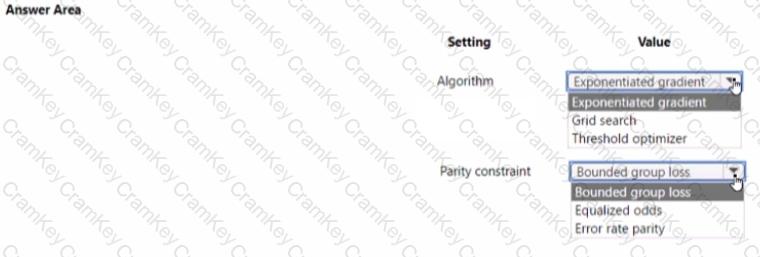| Exam Name: | Designing and Implementing a Data Science Solution on Azure | ||
| Exam Code: | DP-100 Dumps | ||
| Vendor: | Microsoft | Certification: | Microsoft Azure |
| Questions: | 516 Q&A's | Shared By: | corey |
You develop and train a machine learning model to predict fraudulent transactions for a hotel booking website.
Traffic to the site varies considerably. The site experiences heavy traffic on Monday and Friday and much lower traffic on other days. Holidays are also high web traffic days. You need to deploy the model as an Azure Machine Learning real-time web service endpoint on compute that can dynamically scale up and down to support demand. Which deployment compute option should you use?
You have a binary classifier that predicts positive cases of diabetes within two separate age groups.
The classifier exhibits a high degree of disparity between the age groups.
You need to modify the output of the classifier to maximize its degree of fairness across the age groups and meet the following requirements:
• Eliminate the need to retrain the model on which the classifier is based.
• Minimize the disparity between true positive rates and false positive rates across age groups.
Which algorithm and panty constraint should you use? To answer, select the appropriate options in the answer area. NOTE: Each correct selection is worth one point.

You manage an Azure Machine Learning workspace. You use Azure Machine Learning Python SDK v2 to configure a trigger to schedule a pipeline job. You need to create a time-based schedule with recurrence pattern.
Which two properties must you use to successfully configure the trigger? Each correct answer presents part of the solution. NOTE: Each correct selection is worth one point.
You create an Azure Machine Learning workspace.
You must configure an event-driven workflow to automatically trigger upon completion of training runs in the workspace. The solution must minimize the administrative effort to configure the trigger.
You need to configure an Azure service to automatically trigger the workflow.
Which Azure service should you use?